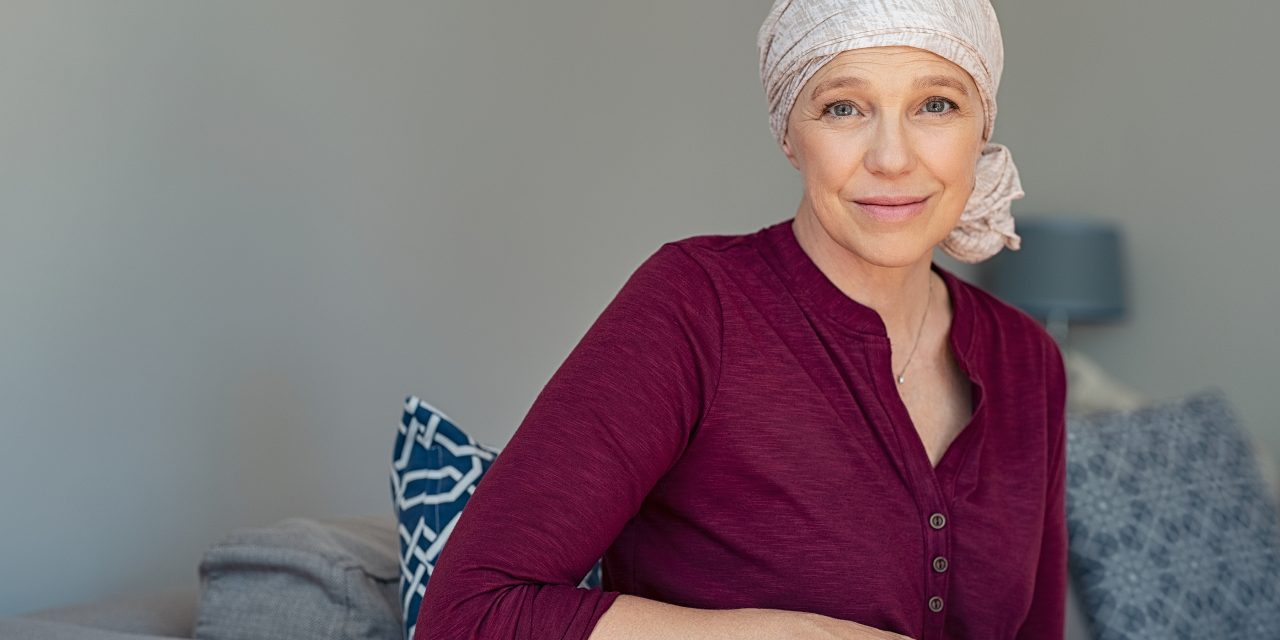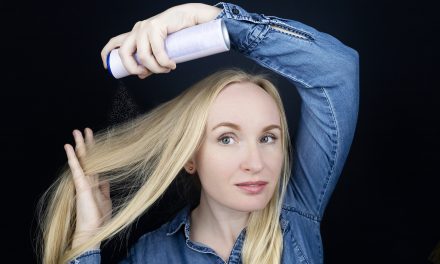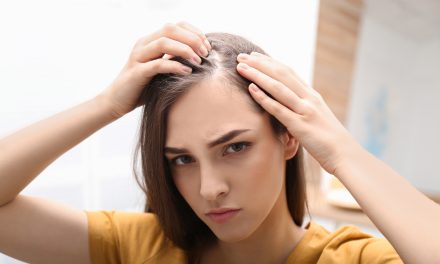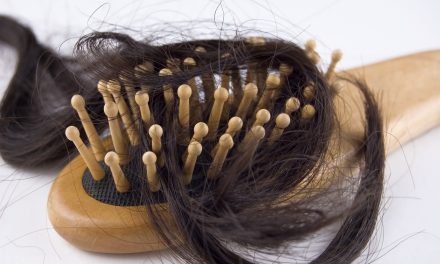Hair loss can be a distressing side effect of chemotherapy for many cancer patients. Chemotherapy drugs target rapidly dividing cells, which include cancer cells as well as hair follicles. Consequently, hair loss after chemotherapy is a common occurrence. It is crucial for patients to understand how to address and cope with this change in their appearance during and after treatment.
The process of hair loss typically begins two to four weeks after the initiation of chemotherapy, and may occur either gradually or in clumps 1. While not all chemotherapy drugs cause hair loss, many patients will experience some degree of hair thinning or complete loss. To minimize the physical and emotional impact of hair loss, it is important to explore different treatment options, hair care strategies, and support systems available during this time.
Key Takeaways
- Hair loss is a common side effect of chemotherapy, and can occur within a few weeks of treatment.
- There are various treatment options and strategies to address hair loss, such as cooling caps and scalp hypothermia.
- Accessing support systems and resources can help patients cope with changes in their appearance and outlook during treatment.
Understanding Hair Loss After Chemotherapy
The Role of Chemotherapy Drugs in Hair Loss
Chemotherapy is a widely-used treatment for various types of cancer. It involves the administration of chemotherapy drugs designed to target and destroy rapidly dividing cancer cells. However, these drugs are not selective and may also affect healthy cells, particularly those in the hair follicles, which also divide rapidly. As a result, individuals undergoing chemotherapy may experience hair loss or alopecia.
There are several factors that influence the severity of hair loss during chemotherapy, including the particular chemotherapy drug or combination of drugs used, the dosage, and the duration of treatment. Not all chemotherapy drugs cause hair loss, and the extent of hair loss can also vary from person to person. It is essential to consult with the healthcare team to understand the potential side effects of the specific chemotherapy drugs being used.
Chemotherapy-Induced Alopecia Explained
Chemotherapy-induced alopecia typically begins two to four weeks after starting the chemotherapy treatment. Hair loss can occur gradually or in clumps, with accumulations of loose hair being found on the pillow, hairbrush, and in the sink or shower drain. The scalp may also become tender during this period.
The hair growth cycle is usually disrupted by chemotherapy drugs, as they interfere with the process of hair follicle cell division. This disruption can lead to temporary hair loss, which usually lasts for the duration of chemotherapy treatment and often starts to reverse after the treatment is completed.
Some tips for managing hair loss after chemotherapy treatment include:
- Be gentle when washing, brushing, and styling your hair
- Keep your scalp clean and moisturized
- Consider using a mild shampoo designed for thinning hair
- Avoid heat-styling tools and chemical treatments such as coloring or perms
- Wear soft caps or scarves to protect your scalp from sun exposure and irritation
By understanding the mechanisms behind chemotherapy-induced hair loss and implementing appropriate self-care measures, individuals can better cope with this temporary side effect of cancer treatment. It is important to keep an open dialogue with the healthcare team to address any concerns and seek proper guidance throughout the treatment process.
Initial Care Strategies
Gentle Hair Care Techniques
After undergoing chemotherapy, it’s essential to take extra care of your hair to minimize further hair loss and encourage regrowth. One of the most important aspects of hair care during this period is being gentle with your hair. Avoid using hot styling tools such as hair dryers, curling irons, and straighteners. Instead, let your hair air-dry naturally.
When combing or brushing your hair, opt for brushes with soft bristles and wide-toothed combs. Regularly washing your hair is essential, but be gentle while doing so. Use your fingertips to massage the scalp instead of using your nails. During this time, it’s best to avoid hairstyles that put stress on the hair, such as tight ponytails, braids, or buns.
Selecting Suitable Shampoos and Conditioners
Choosing the right shampoo and conditioner is crucial in accelerating hair regrowth after chemotherapy. Look for products specifically designed for fragile or thinning hair. It’s also a good idea to consider shampoos and conditioners that are free from harsh chemicals, such as sulfates and parabens.
Prioritize products that contain nourishing and natural ingredients like aloe vera, chamomile, or rosemary. These ingredients are known to be gentle on the hair and scalp while providing essential nutrients for hair growth.
In summary, it’s important to consult your care team and consider the mentioned gentle hair care techniques to treat hair loss after chemotherapy. Selecting suitable shampoos and conditioners that cater to fragile hair growth will also be beneficial in nurturing your hair during this sensitive period.
Medical Treatments and Interventions
Hair loss after chemotherapy can be distressing, but there are several medical treatments and interventions available to manage and mitigate the effects. In this section, we will discuss prescription medications and the use of minoxidil for regrowth.
Prescription Medications
After chemotherapy, your doctor may prescribe certain medications to help with hair regrowth and overall health. It’s essential to follow your doctor’s recommendations and treatment plan, as each individual’s needs and circumstances will be different.
One popular medication for treating hair loss after chemotherapy is minoxidil. Clinical studies have shown that minoxidil can help promote hair regrowth and improve overall hair health.
The Use of Minoxidil for Regrowth
Minoxidil is a medication that is applied topically to the scalp and is often used in the treatment of hair loss after chemotherapy. It is an over-the-counter product, but it can also be prescribed by a doctor. Minoxidil works by increasing blood flow to hair follicles, stimulating growth and prolonging the active hair growth phase.
There are a few things to consider when using minoxidil for hair regrowth:
- Be patient: Hair regrowth can take time. It typically takes several months of consistent use before seeing noticeable results.
- Follow the recommended dosage. Your doctor will advise you on the appropriate amount and frequency of use for your situation.
- Monitor for side effects. Although minoxidil is generally well-tolerated, it can cause itching, redness, or irritation. If you experience any of these side effects, consult your doctor for further guidance.
- Keep in mind that discontinuing minoxidil may lead to hair loss once again. If you decide to stop using the medication, be aware that any hair regrown may be lost.
In conclusion, various medical treatments and interventions can help address hair loss after chemotherapy. By consulting with a healthcare professional and following their advice, patients can find the most appropriate treatment for their hair regrowth journey. Remember, it’s essential to stay patient and remain committed to the recovery process, as hair regrowth can take time and perseverance.
Cooling Caps and Scalp Hypothermia
Understanding Scalp Cooling Technology
Scalp hypothermia is a method used to prevent or reduce hair loss during chemotherapy treatments. Cooling the scalp involves using cooling caps or cold caps, which are worn on the head before, during, and after each chemotherapy session. These caps work by constricting the blood vessels beneath the skin on the scalp, leading to a reduction in blood flow to hair follicles. With less blood flow and a decreased amount of chemotherapy medication reaching follicles, hair is less likely to fall out.
Cooling caps are designed specifically for preventing hair loss from chemotherapy. They are made from materials that help maintain the cap’s cold temperature and keep the scalp cool. Different types of cooling systems exist and can include manual ice-pack caps or those connected to a cooling machine concentration circulating chilled liquid.
Efficacy and Considerations
Scalp cooling’s effectiveness in preventing hair loss is dependent on several factors such as the type of chemotherapy drugs used, the dose, and the individual’s unique response. It is important to note that scalp cooling may not completely prevent hair loss, but it can significantly reduce the amount of hair that falls out.
While using scalp cooling methods, some patients may experience adverse effects such as discomfort from the cold or headaches. Proper communication between a patient and their healthcare team is crucial in managing any potential side effects and ensuring the best outcomes.
In conclusion, scalp hypothermia, or cooling caps, can be an effective way to reduce hair loss during chemotherapy treatment. By understanding the technology and its potential side effects, patients can make an informed decision and work closely with their healthcare team to find the best solution for their needs.
Footnotes
- Breastcancer.org – Cold Caps and Scalp Cooling Systems ↩
- Cancer.org – Cooling Caps (Scalp Hypothermia) to Reduce Hair Loss ↩
- MSKCC – Managing Hair Loss with Scalp Cooling During Chemotherapy for Solid Tumors ↩
- Mayo Clinic – Chemotherapy and Hair Loss: What to Expect During Treatment ↩
- Mayo Clinic Health System – Cold Cap Scalp Cooling Therapy ↩
Hair Care Post Chemotherapy
Timing for Hair Coloring and Perming
Hair may start to grow back within a few weeks after chemotherapy treatment has been completed. It is important to wait for your hair to become strong enough before considering hair coloring or perming. Typically, it is recommended to wait at least 6 months after the end of treatment before undergoing these procedures. This allows your hair to regrow and regain its strength, minimizing the risk of further damage.
During hair regrowth, you may notice changes in the color and texture of your hair, as mentioned by Health. It is important to monitor these changes and adapt your hair care routine accordingly.
Adapting to Texture Changes
The texture of your hair may change after chemotherapy, often becoming curlier or more coarse. Here are some tips for managing texture changes during the hair regrowth process:
- Gentle brushing: Use a soft-bristle brush or wide-tooth comb to avoid causing undue stress on delicate regrowth.
- Moisturizing hair products: Opt for sulfate-free shampoo and conditioner that can help with hydration and prevent dryness.
- Avoid heat styling: Limit the use of heat-styling tools like flat irons and curling wands to avoid further damage.
As hair grows back post chemotherapy, it is essential to take care of the new hair and be patient while adjusting to the changes. Focusing on gentle hair care practices will help keep your hair healthy and strong as it regains its natural state.
Coping with Changes in Appearance
Chemotherapy can result in hair loss, affecting not only the scalp but also other parts of the body, such as eyebrows and eyelashes. It is essential to address these changes in appearance to maintain your confidence and self-esteem during this challenging time.
Dealing with Eyelash and Eyebrow Loss
Eyelash Loss: Losing eyelashes can be distressing, but there are practical tips that can help maintain your appearance during this time. Consider using eyelash enhancers, like mascara or eyeliner, to create a fuller look and enhance your eyes. If you are more comfortable with a natural look, you may opt for eyelash extensions or false eyelashes to bring back some volume and length.
Eyebrow Loss: Eyebrow loss can be addressed by using makeup like eyebrow pencils and gels. They help in filling in the gaps and providing a natural-looking definition. Alternatively, you can consider eyebrow wigs or tattoos as semi-permanent solutions to restore your eyebrows’ appearance. Moreover, you can experiment with various eyebrow shapes and colors to find the ideal look that suits you.
Embracing New Hair Patterns
Hair Growth After Chemo: When hair growth starts post-chemotherapy, your hair might grow back differently than it was before, exhibiting changes in color, texture, and curl pattern. Accepting and embracing these changes can help improve your self-image and confidence. Try out new hairstyles or visit a professional hairstylist to find the perfect look that suits your new hair pattern.
Caring for New Hair: As your hair grows back, it is essential to take care of it properly. Keep your scalp nourished by using gentle shampoos and conditioners specially formulated for sensitive skin. Avoid heat styling and harsh chemicals to minimize any damage to the recovering hair follicles.
Incorporating these coping strategies can ease the process of adjusting to the changes in appearance caused by chemotherapy, allowing you to focus on recovery and maintaining your overall well-being.
Protecting Your Scalp
The Importance of Sunscreen
Protecting your scalp from harmful UV rays is crucial during and after chemotherapy. After hair loss, the scalp becomes more sensitive to the sun, and it’s essential to provide proper care. One of the most effective ways to protect your scalp is by applying sunscreen regularly. Choose a broad-spectrum sunscreen with an SPF of at least 30, which can block 97% of UVB rays. Apply the sunscreen liberally and reapply every 2 hours, or more frequently if you are sweating or swimming. This will not only protect your scalp from sunburn but also reduce the risk of skin damage and potential skin cancers.
Hat and Scarf Selection
Wearing a hat or scarf is another essential step in protecting your scalp during and after chemotherapy. Here are some tips for selecting the perfect head covering:
- Material: Opt for natural, breathable materials like cotton, linen, or bamboo to keep your scalp cool during hot weather and warm during colder months. Avoid synthetic materials that may irritate the scalp.
- Fit: A well-fitting hat or scarf should be snug but not too tight, as this can cause discomfort or irritation on your sensitive scalp. Ensure that your chosen head covering provides sufficient coverage and sits comfortably on your head.
- Style: There are various styles to choose from, such as beanies, turbans, and bandanas. Pick a style that suits your personal preference, and don’t hesitate to experiment with different options.
- UV Protection: Some hats and scarves come with a UPF (Ultraviolet Protection Factor) rating. A UPF-rated head covering provides additional protection against harmful UV rays. Look for head coverings with a UPF of 50 or higher for optimal scalp protection.
In conclusion, taking the necessary steps to protect your scalp, such as using sunscreen and selecting appropriate head coverings, is vital during and after chemotherapy. With the right care, you can ensure your scalp remains healthy and comfortable throughout your treatment and recovery journey.
Alternative Hair Solutions
Choosing a Wig or Hairpiece
After undergoing chemotherapy, many individuals experience hair loss and seek alternative hair solutions such as wigs and hairpieces. Choosing the right wig or hairpiece can help boost one’s self-confidence and provide a sense of normalcy. It’s important to consider factors such as the material, style, and fit when selecting a wig. There are two primary types of wigs — synthetic and human hair.
Synthetic Wigs are more affordable, easy to maintain, and come in various styles and colors. On the downside, they might not look as natural, and they can be sensitive to heat.
Human Hair Wigs offer a more natural look and feel, but often require more care and styling. They are also more expensive than synthetic wigs.
When fitting a wig, ensure it’s secure and comfortable on the head. It’s best to select a wig before hair loss starts, which allows the stylist to match the color and style to your existing hair.
Styling with Turbans and Scarves
In addition to wigs and hairpieces, chemotherapy patients can explore other alternatives such as turbans and scarves. These stylish head coverings are versatile, comfortable, and can be worn in various ways to match one’s personal preference and outfit.
Some popular ways to style turbans and scarves include:
- The Classic Turban: This style provides full head coverage and a trendy look. Simply wrap the scarf or fabric around the head, twisting it at the front and tucking the ends underneath.
- The Rosette: Create a floral-like design by bunching the fabric at the top of the head and twisting it until it forms a circular rosette. Secure it with a pin or tuck the ends underneath.
- The Boho-style: For a more relaxed and carefree look, simply drape the scarf over the head, cross the ends at the back, and bring them to the front. Let the loose ends hang naturally by the side or tie them in a knot.
Experimenting with various turbans and scarves allows individuals to express their creativity and rediscover their sense of style following chemotherapy-induced hair loss. Remember, the key factor when choosing head coverings is personal comfort and confidence.
Support Systems and Resources
Connecting with Cancer Support Groups
Finding the right support is crucial for individuals dealing with hair loss after chemotherapy. Being in touch with people who share the same experiences can help you feel less isolated and better cope with this side effect. Many cancer treatment centers offer support groups that are specially designed to address hair loss and other physical changes caused by chemotherapy.
It’s essential to remember that you are not alone in facing these challenges – there are plenty of people who can relate to your experience. Joining support groups can help you build a community with whom you can exchange useful tips and information on managing hair loss during cancer treatment.
Programs by American Cancer Society
The American Cancer Society (ACS) understands that hair loss is a significant concern for cancer patients, and they have developed several programs and resources to help ease this burden. ACS offers a catalog called “tlc” Tender Loving Care®, which contains various products specifically designed for women experiencing hair loss due to cancer treatment. This catalog can be accessed by visiting their website or calling 1-800-850-9445.
Another notable program is the “Look Good Feel Better” initiative. This program aims to help cancer patients improve their self-image and cope with appearance-related changes during cancer treatment, including hair loss. Free workshops and support materials are available through this initiative, giving patients access to professional advice on hair and skincare products, wigs, and other accessories.
In conclusion, hair loss after chemotherapy can be a challenging experience, but numerous support systems and resources are available to help patients manage this side effect. By utilizing these resources, cancer patients can find the strength to face their treatment journey with self-confidence and a healthy outlook.
Considerations for Resuming Normal Activities
Managing Physical Activity and Hair Care
After completing chemotherapy, many patients experience temporary hair thinning or hair loss. It’s important to properly care for your hair and scalp as you resume your normal activities. Be gentle with your hair by avoiding harsh chemicals or heat treatments, and consider using a mild shampoo and soft brush.
Taking care of your overall health is essential for promoting hair regrowth. As you begin to reintroduce physical activity, gradually increase the intensity to minimize the impact of stress on hair regrowth. It’s important to consult with your healthcare provider as you ease back into your exercise routine.
Social and Psychological Adjustments
Comprehensive support is crucial for individuals who have undergone chemotherapy, as hair loss may impact their self-esteem. The Look Good Feel Better program is an excellent resource for addressing physical and emotional needs during this transitional period. Moreover, assess your health insurance coverage to determine if it covers services like counseling or wig fittings.
Reconnecting with friends, family, or support groups can help alleviate some of the social anxieties accompanying post-chemotherapy hair loss. Open communication and ensuring that your loved ones are well-informed about your experience can help create an atmosphere of understanding.
In conclusion, resuming normal activities after chemotherapy entails a delicate balance of physical and emotional support. By following proper hair care regimen, managing stress, and accessing resources like Look Good Feel Better program, you can confidently transition back into daily life. Remember to consider the unique factors of your health insurance coverage, and lean on the vital support of friends, family, and support groups.
Frequently Asked Questions
What are effective methods to promote hair regrowth post-chemotherapy?
Hair regrowth often begins naturally a few weeks after the completion of chemotherapy treatments. However, some actions can be taken to promote regrowth, including the use of a gentle shampoo, maintaining a healthy diet, and getting proper scalp hygiene. There is also evidence of using FDA-approved medications, such as Minoxidil, to enhance hair growth.
Are there natural remedies to enhance hair recovery after undergoing chemotherapy?
Yes, some natural remedies can promote hair recovery following chemotherapy. These include massaging the scalp with essential oils, such as lavender, rosemary, or thyme, adopting a nutritious diet, and ensuring adequate water intake. It’s important to consult with a healthcare professional before starting any natural remedy.
What timeline can be expected for hair regrowth following the completion of chemotherapy?
Hair regrowth can vary from person to person; however, patients typically experience new hair growth within two to four weeks after the completion of chemotherapy. Hair may grow back differently in terms of thickness, texture, and color than it was before treatment.
Are there any supplements proven to aid in hair regrowth for chemotherapy patients?
Different supplements may support hair regrowth after chemotherapy, such as biotin, vitamin D, and zinc. However, it’s crucial to consult with your care team before incorporating supplements into your regimen, as they can interact with medications or have side effects.
What are the strategies to camouflage hair loss during and after chemotherapy treatment?
Various methods can be used to camouflage hair loss during and after chemotherapy treatments, such as wearing wigs or hairpieces, using hats or scarves, and applying temporary hair color sprays to fill in thinner areas. You can also try hairstyles that give an illusion of fuller hair, like volumizing shampoos or root-boosting sprays.
Can hair loss be permanent post-chemotherapy and how can it be addressed?
While it is rare, hair loss can be permanent in some cases following chemotherapy. If you’re concerned, consult with your healthcare team or a dermatologist, who may suggest various treatments to address the issue. Options may include hair transplantation, low-level laser therapy, or medications to promote regrowth. It’s essential to remain patient and find the most suitable solution for your specific situation.




















